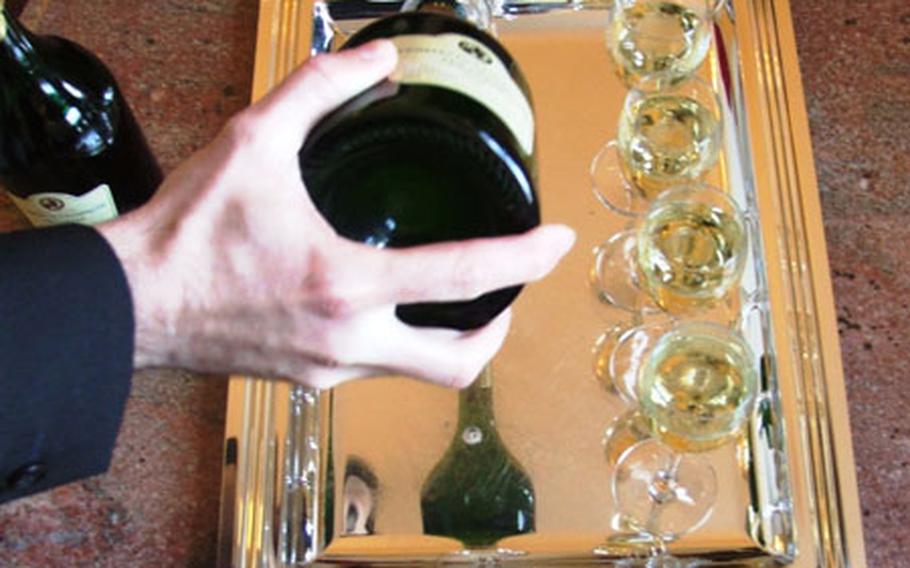
Reims is the city of Champagne. Many Champagne cellars can be visited, and a tasting is usually included in the tour. (Leah Larkin / Special to Stripes)
"Notice the fine, elegant bubbles," our host pointed out as we sipped Champagne. "That’s the sign of quality."
We had just visited the cellars of Taittinger, a Champagne house in Reims, the city of Champagne, and now were tasting one of its premier products. Both the Champagne and the cellars are magnificent. Part of the cellars date to the fourth century when Gallo-Roman chalk mines were dug 66 feet underground. During the 13th century, the cellars were enlarged by monks to store their Champagne wines. Dark tunnels lead to huge vaulted caverns where thousands of bottles are stored on A-shaped stands.
We learned about the intricate process of aging the exclusive beverage. Bottles, stored at an angle on the special racks, must be turned regularly by hand to force the yeast to the bottle neck. In the final step, bottles are opened and the yeast is disgorged — also by hand.
Any visit to Reims should include a visit to a Champagne cellar, as well as the city’s outstanding cathedral of Notre Dame de Reims, whose origins go back to 401. The Gothic structure built from the 13th to the 15th centuries is to be admired today; the intricate façade includes 2,303 statues.
Many of the stained glass windows were destroyed during Word War I when 286 shells hit the church, and not all the windows have been replaced. The ones of special note are those by Marc Chagall illustrating the Old and New Testaments. These vibrant panes of color were installed in 1974.
The Tau Palace Museum, adjacent to the cathedral, is the former residence of archbishops. It was badly damaged by fire during World War I, but has been restored and now houses a collection of tapestries, religious articles and the crown jewels of Charles X’s coronation.
Other sights in the city include the Andrew Carnegie Library built in art deco style thanks to donations by the American steel tycoon.
The city’s WWI museum is at Fort de la Pompelle. World War II is recalled at the Musée de la Reddition, the Surrender Museum. The Allies ended World War II in Europe on May 7, 1945, with the unconditional surrender of the Third Reich’s armed forces. The official documents were signed in Gen. Dwight Eisenhower’s war room, which occupied part of Reims’ technical college. The signing room is now part of the Surrender Museum.
If you go ...
• Best Western Hôtel de la Paix, 9 rue Buirette, offers rooms from 140 euros, breakfast, 13 euros; www.bestwestern-lapaix-reims.com.
• Le Cafe du Palais, 14 place Myron-Herrick, is a bistro with funky decor and meals between 15 and 30 euros. (+33 (0) 326-47-52-54, www.cafedupalais.fr.
• Climb 249 steps in the tower of the cathedral of Notre Dame and walk around the roof for super views; admission 6 euros.
• Surrender Museum, 12 rue Franklin Roosevelt, is open 10 a.m. to noon and 2-6 p.m.; closed Tuesdays and public holidays. A pass for entrance to this museum plus several others is 3 euros.
• Taittinger Cellars, 9 Place Saint-Nicaise, is open 9:30 a.m. to 1 p.m. and 2-5:30 p.m. daily mid-March to mid-November, open same hours Monday through Friday rest of year. A one-hour tour including a film and Champagne tasting for 10 euros.
• Several other Champagne cellars in Rheims offer cellar tours. More information on the city: www.reims-tourisme.com.
— Leah Larkin